|
Click pictures for a larger version.
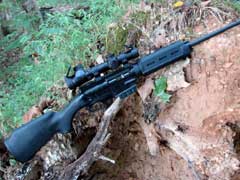


Magazine release.
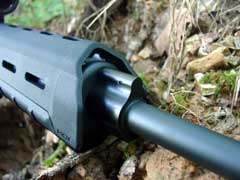

Charging handle.
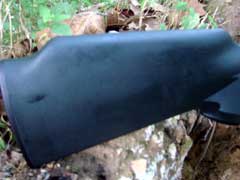
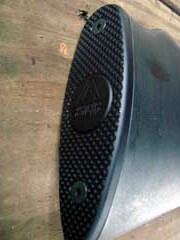
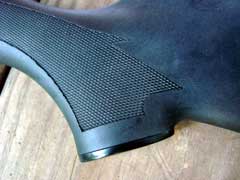
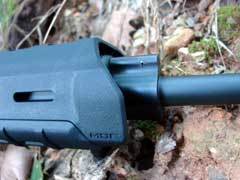
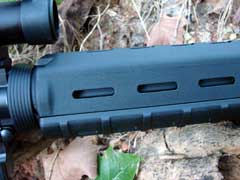
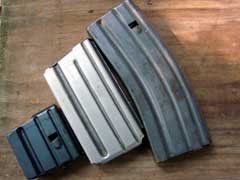
Ares SCR can use any 223/5.56 AR-compatible magazine.
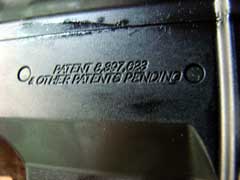
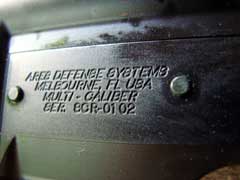
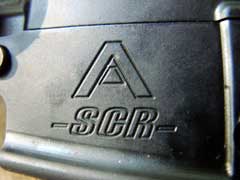
|
|
The basic semi-automatic AR-15 and its many
variations make up a group of rifles that are the most popular
style of rifle in the US. I have no idea, and won't even attempt
to assemble a list of the many manufacturers of the AR style of
rifle in this country, as any list that I might put together
would be obsolete and incomplete by the time this review is
posted. An AR-15 is one of those weapons with which every person
in the US should be familiar, as there may come a day when every
citizen will be called upon to use one. I think that every
citizen, no matter the country in which he or she lives, should
know how to run the basic fighting rifle of their nation, and in
the US, the AR is as close to the M16 and M4 as we can legally
and affordably own. However, in some jurisdictions of our
nation, the privileged few who make the laws, and the idiots who
keep electing them, seek to forbid the common citizenry from
owning such weapons, and have banned the ownership of one of the
best fighting rifles ever designed. In such jurisdictions, those
who intend to stay and abide by the law must seek out
alternatives, and for those, the Ares SCR (Sport Configurable
Rifle) is a weapon which complies with the laws of many of those
jurisdictions, and I believe is also fifty-state compliant.
Besides complying with laws which ban certain
features of the AR-15 such as vertical pistol grips and
telescoping buttstocks, the SCR is also a handy sporting rifle
on its own merits. Using many components of the AR system, the
SCR is an accurate, reliable, and handy weapon. The buttstock on
the carbine shown here is of the Monte Carlo style, made of
black synthetic, and is very comfortable to use with a scope.
The upper receiver wears a flattop 1913 Picatinny rail, for the
mounting of optical sights. The sixteen and one-quarter inch
barrel has a slim profile, measuring .603 inch diameter forward
of the gas block. The handguard is a black synthetic Magpul MOE
carbine-length unit. The hard-anodized aluminum upper receiver
has no case deflector, forward assist, nor bolt latch, but the
lower will accept AR uppers in various configurations, if
desired. The lower receiver is also built of hard-anodized
aluminum.
The bolt carrier group accepts AR-style
bolts, but the carrier itself is different from a standard AR
bolt carrier. The stock has no AR-style buffer tube, but the
tailpiece on the bolt carrier compresses a spring within the
buttstock upon firing, with the spring returning the carrier,
stripping a cartridge from the magazine and pushing it into the
chamber. After opening the rifle and pulling the carrier for
barrel cleaning, I found it easier to also pull the front pin,
fully separating the upper and lower receivers to reassemble the
carbine, and inserting the rear pin first, to assure that the
tail piece of the carrier was placed properly ahead of the
spring. When firing the SCR, the bolt does not remain open on an
empty magazine. The SCR ships with one five-round magazine, but
will accept any 223/5.56mm AR magazines. The SCR is also offered
in and is configurable to the 7.62x39 cartridge. The SCR also
ships in a hard plastic storage case.
The carbine version of the SCR shown here
weighs in at 5.7 pounds empty, and has an overall length of
16.375 inches. The length of pull measures 13 inches from the
center of the butt plate to the center of the trigger. The SCR
has a crossbolt safety at the rear of the trigger guard. The
trigger pull was a bit on the heavy side, with 10.4 pounds of
resistance. The charging handle is of the AR type, pulling
rearward and releasing to chamber a round from the magazine.
This
test SCR rifle came to me with a Leupold Mark 4 MR/T 1.5 to 5
power scope already mounted, so I left that scope mounted for
accuracy testing at 100 yards. Velocity testing was done with
the chronograph set out twelve feet from the muzzle at an
elevation of 541 feet above sea level, approximately.
Temperatures hovered around the eighty-four degree Fahrenheit
mark during all velocity testing. Relative humidity was in the
sixty-five percent range. Velocity readings are the average of
several shots fired, and the results are listed in the chart
below. Velocity readings are listed in feet-per-second (fps).
Bullet weights are listed in grains. FMJ is a full metal jacket
bullet. HP is hollowpoint. V-Max is a polymer-tipped varmint
bullet. TSX is a Barnes Triple Shock homogenous copper
hollowpoint bullet. The handload listed uses the TSX bullet with
24.5 grains of Ramshot TAC powder, a Remington small rifle
primer, and Winchester commercial .223 Remington cases.
| Ammunition |
Bullet Weight |
Velocity |
| American Tactical FMJ |
62 |
2965 |
| Hand Load TSX |
62 |
2790 |
| Winchester USA FMJ |
55 |
2932 |
| Winchester USA FMJ |
62 |
2902 |
| Buffalo Bore HP |
69 |
2878 |
| Samson FMJ |
63 |
2810 |
| Black Hills HP |
69 |
2715 |
| Wolf Gold HP |
75 |
2560 |
| Lake City SS109 AP |
62 |
3082 |
The Ares SCR functioned perfectly with each
type of ammo listed in the chart above. Every cartridge fed,
fired, and ejected perfectly, using the supplied five-round
magazine, as well as military twenty and thirty-round magazines.
The ejection pattern had an empty cartridge to graze the side of
my head occasionally, as I fire from the left shoulder, but no
blood was drawn nor pain inflicted, as most would glance off the
side of my right ear muff. The Monte Carlo buttstock proved very
comfortable to handle and fire the weapon.
Accuracy was very good from the bench. I
placed the SCR into my Target Shooting
Model 500 rifle rest, and after getting on paper at
twenty-five yards, then fifty, I worked on the one hundred yard
target for accuracy testing, firing three-shot groups.
Between groups, I allowed the barrel to cool slightly,
but not fully, before firing another group. Accuracy varied from
superb to better-than-average, with group sizes running from
just under half an inch, up to just over two inches, depending
upon the ammunition used. Buffalo Bore, Black Hills, and Cor-Bon
69 grain ammo turned in the best accuracy performance, as
expected. Also no surprise was that 55 grain surplus stuff
produced the largest groups. No rifle can shoot any better than
the ammunition fed to it, and many rifles will not shoot up to
the standards of the ammunition, but this SCR proved to have the
inherent accuracy to take advantage of the accuracy built into
quality ammunition.
The Ares SCR performed very well, proving to
be one hundred percent reliable, with plenty of accuracy for
serving very well for both hunting and social work. My only
gripe at all was the heavy pull weight of the trigger, but that
is easily corrected after the purchase, if desired. The rifle is
light, handy, accurate, and built in the USA.
As configured (minus the scope), this rifle carries an MSRP of
$865.00 US as of September 2014.
For more information and a list of stocking
dealers for the Ares SCR, go to www.aresdefense.com.
For
a look at the extensive line of Leupold optics, go to www.leupold.com.
To order quality 5.56x45 and 223 ammunition,
go to www.buffalobore.com,
www.midsouthshooterssupply.com,
www.doubletapammo.com,
and www.luckygunner.com.
Jeff Quinn
NOTE: All load data posted on this
web site are for educational purposes only. Neither the author nor
GunBlast.com assume any responsibility for the use or misuse of this data.
The data indicated were arrived at using specialized equipment under
conditions not necessarily comparable to those encountered by the
potential user of this data. Always use data from respected loading
manuals and begin working up loads at least 10% below the loads indicated
in the source manual.
  
Got something to say about this article?
Want to agree (or disagree) with it? Click the following link to
go to the GUNBlast Feedback Page.
|
|
Click pictures for a larger version.
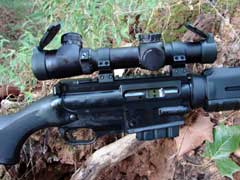
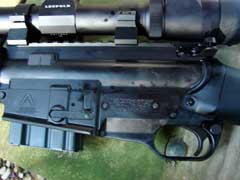

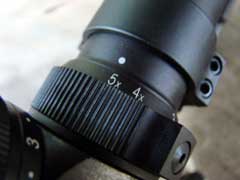
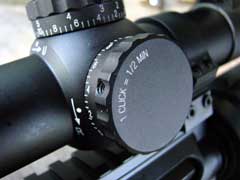
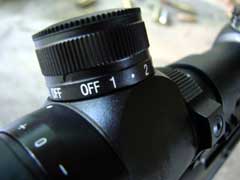
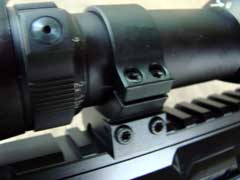
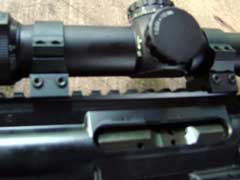
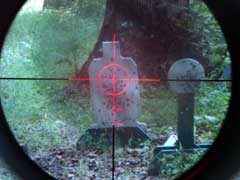
Leupold Mark 4 scope.
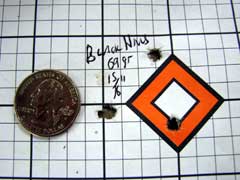

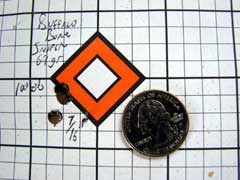

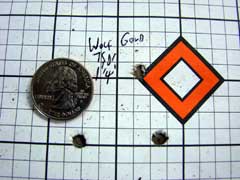
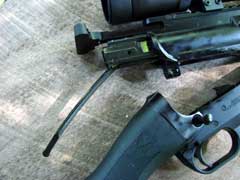
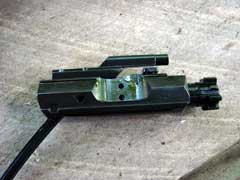
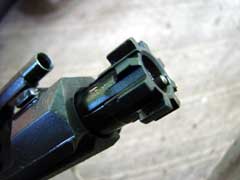
|
![]()